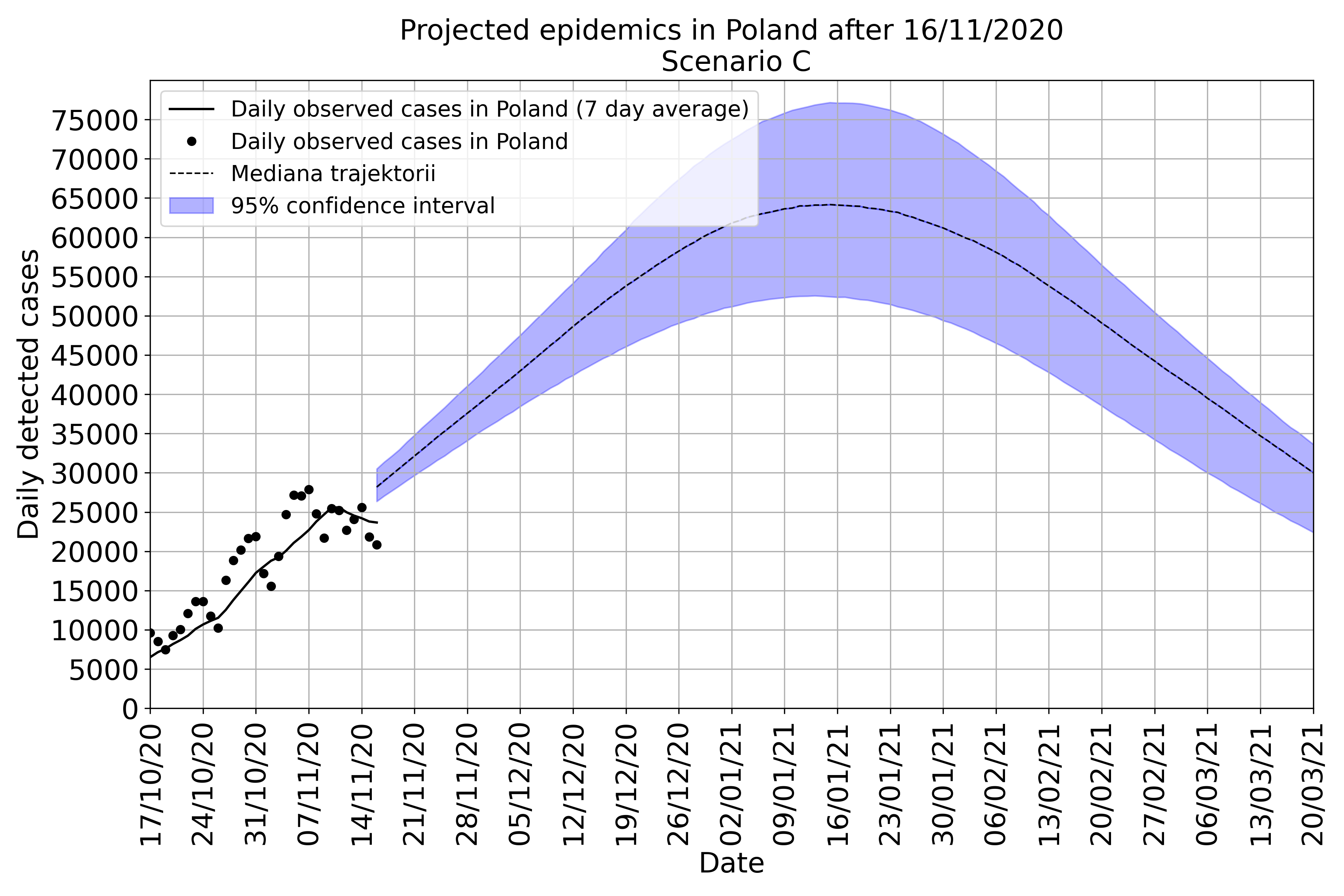Forecasts for the development of the epidemic in Poland after 17.11.2020
We compare three variants of the development of the epidemic in Poland depending on the level of contact reduction
We consider the total effect of contact reduction on the development of the number of infected people in three variants (reduction by A: 60%, B: 67%, C: 72%). We assume a realistic ability of the Sanepid to track the contacts of infected persons, i.e. that less than 30% of the contacts of infected persons are quarantined on time. Under this assumption, the model estimates that The current level of contact reduction is about 42-47%.
 Figure 1. Parameter map - each grid cell is a combination of two simulation parameters: f - contact reduction degree, b - contact tracking efficiency.
Figure 1. Parameter map - each grid cell is a combination of two simulation parameters: f - contact reduction degree, b - contact tracking efficiency.
The scenarios we have considered indicate significant differences depending on the level of effectiveness of the introduced restrictions.
Scenario A (moving from the blue area to the field marked by the letter A (or more or less any field to the right of the letter A)) is the most optimistic - the restrictions introduced They achieve in this scenario the full hopes placed in them for limiting the development of the epidemic.
Scenario B (moving from the blue area to the field marked by the letter B) allows to limit the development of the epidemic, but in a much longer term perspective.
Scenario C (moving from the blue area to the field marked by the letter C) does not stop the epidemic before further development despite the fact that the pace of development here is much weaker than if it had remained in the blue area. In scenario "C" only at the beginning of January the number of observed cases per day it starts to fall slowly. Details of the projected number of daily incidence increases in Poland in tThe following scenarios are presented in the illustrations in the table below.
The dotted line marks the variant included in the following simulation: assuming a realistic contact tracking efficiency of no more than 30%.
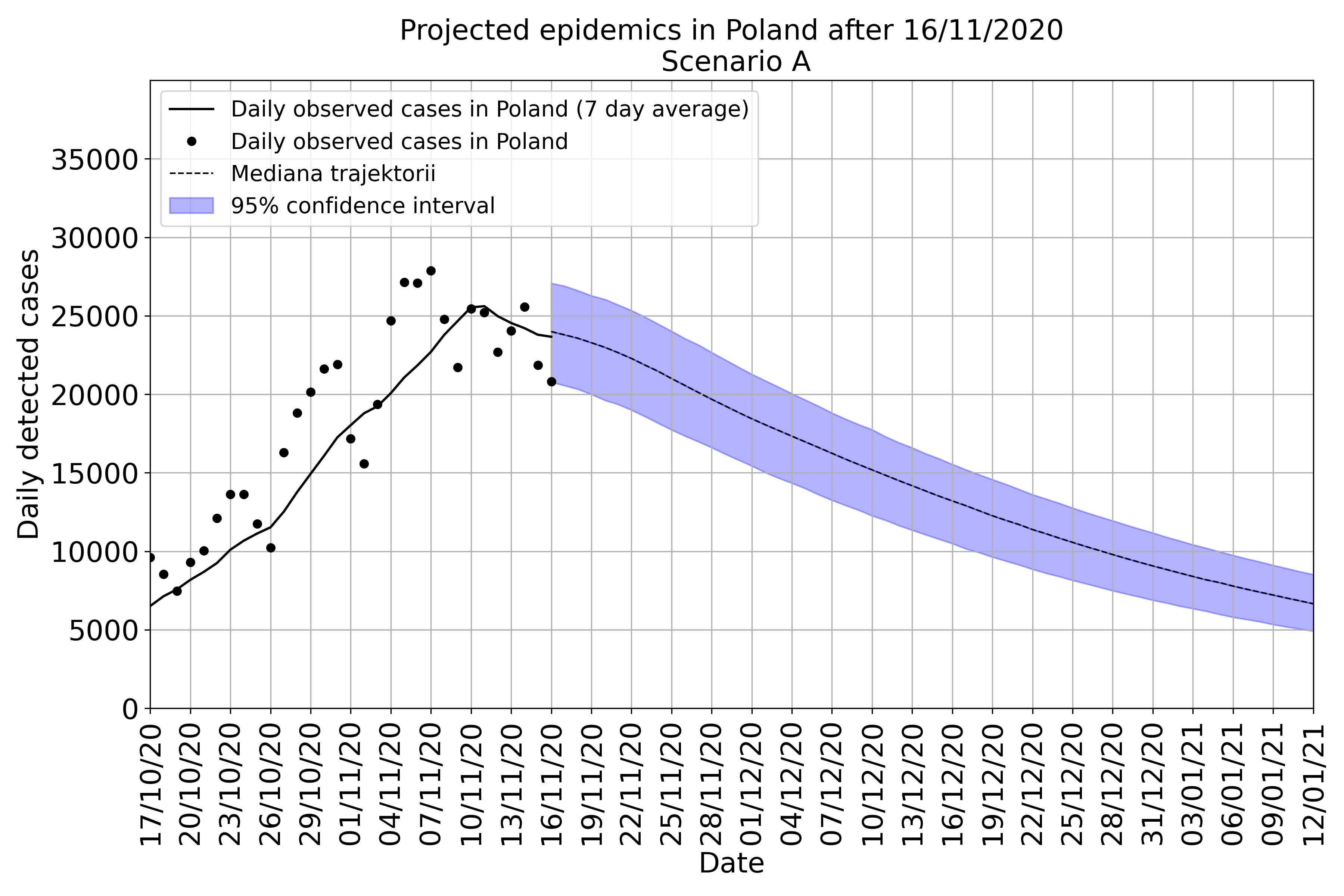 Option A: realistic contact tracking, significant reduction of contacts - by at least 72%.
Top: the forecast in the horizon to the end of the year, bottom: to March 2021.
Option A: realistic contact tracking, significant reduction of contacts - by at least 72%.
Top: the forecast in the horizon to the end of the year, bottom: to March 2021.
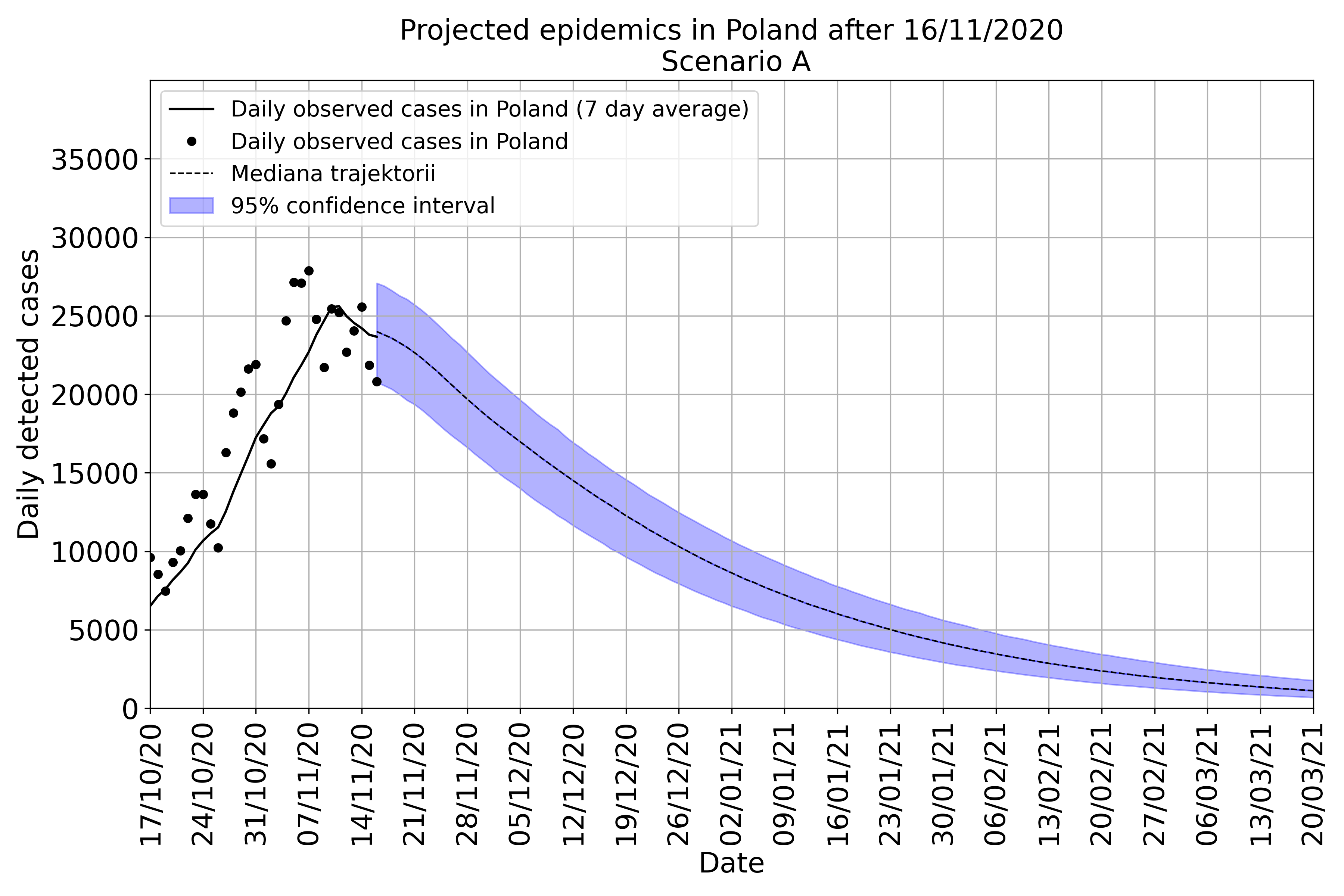
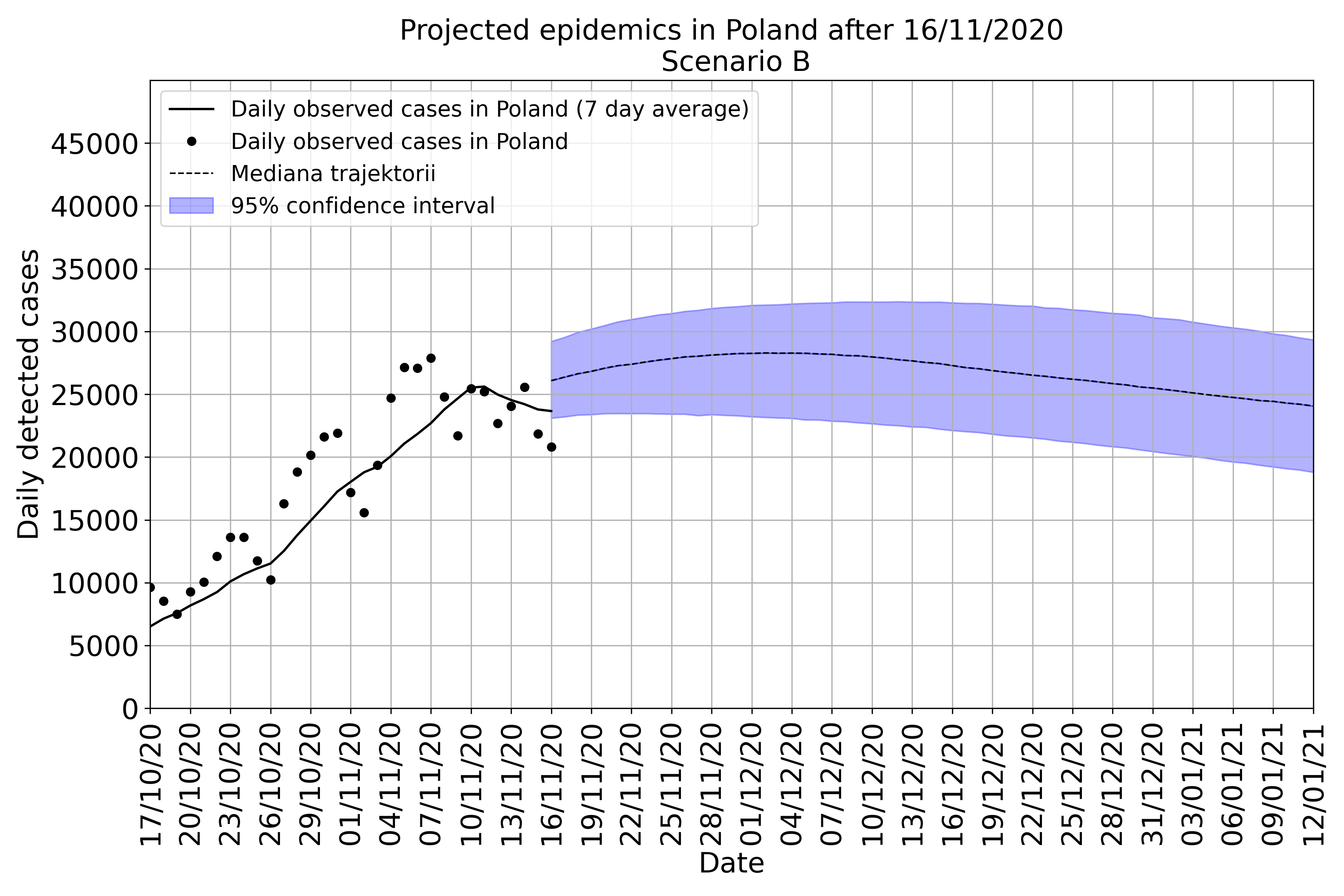 Option B: realistic contact tracking, moderate reduction of contacts - by at least 67%.
Top: the forecast in the horizon to the end of the year, bottom: to March 2021.
Option B: realistic contact tracking, moderate reduction of contacts - by at least 67%.
Top: the forecast in the horizon to the end of the year, bottom: to March 2021.
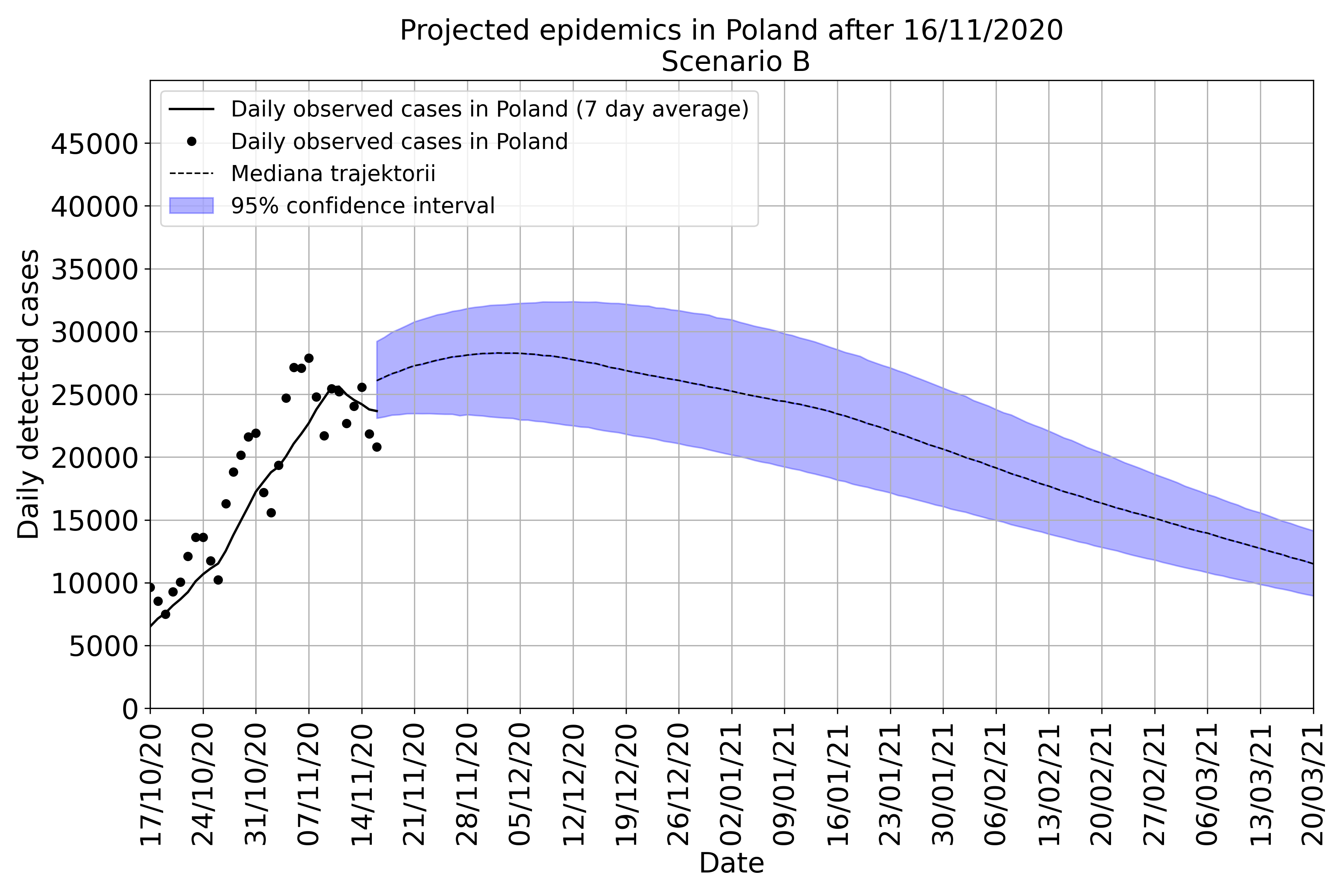
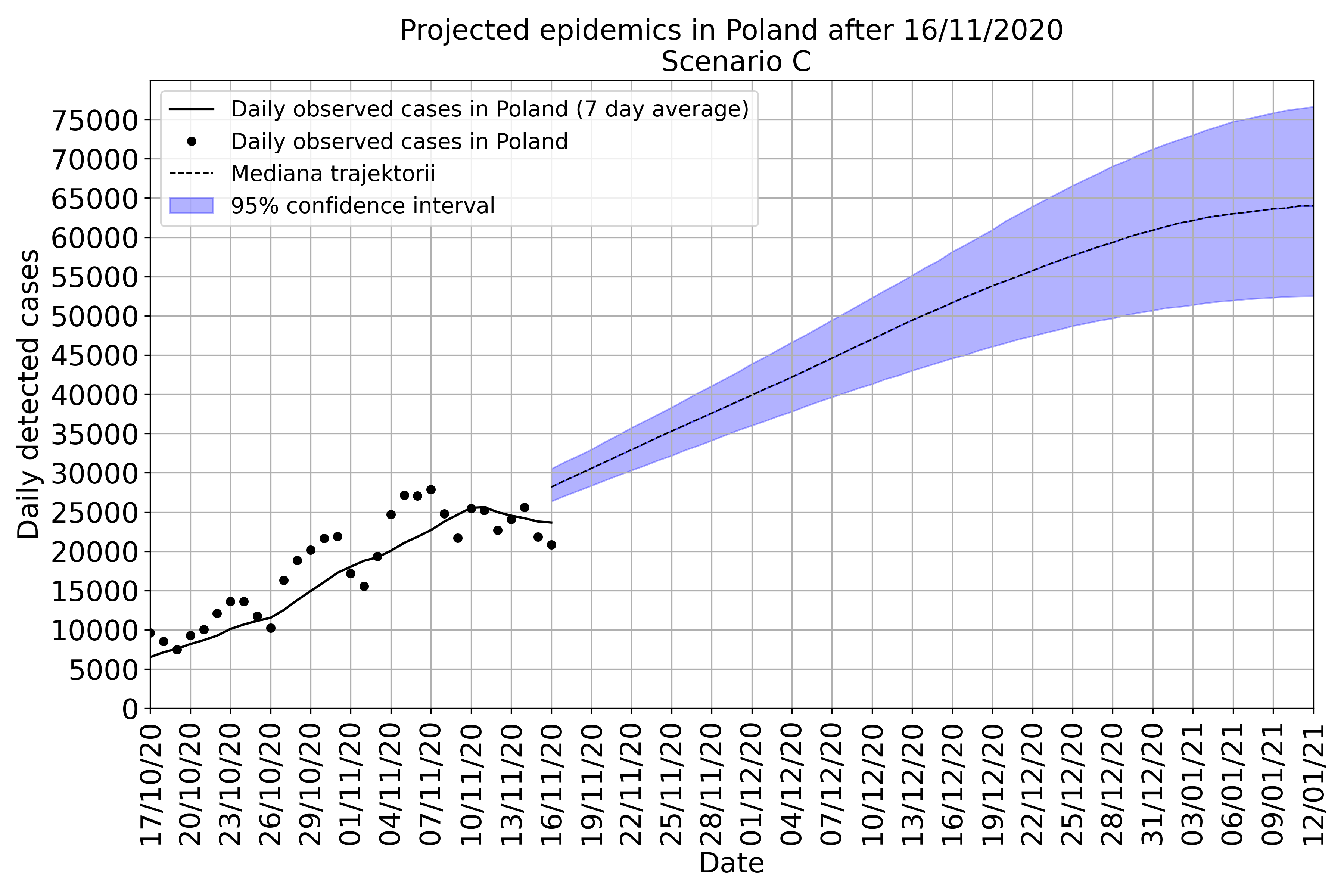 Option C: realistic contact tracking, low reduction of contacts - by at least 60%.
Top: the forecast in the horizon to the end of the year, bottom: to March 2021.
Option C: realistic contact tracking, low reduction of contacts - by at least 60%.
Top: the forecast in the horizon to the end of the year, bottom: to March 2021.
